If you are new to the world of winding yarn, then you have come to the right place. This post breaks down what a yarn winder is, when you actually need one, and how it pairs with a yarn swift. We will cover the difference between skeins and hanks, show a simple setup for winding at home, and share a quick how-to for using a hand crank winder.
What is a yarn winder?
A yarn winder is a small machine with a cylinder that spins around while tilting back and forth. This motion spins the yarn into a nice symmetrical shape. Yarn that has been wound up by a yarn winder is affectionately referred to as a cake. The simplest yarn winders use a wing nut to fasten the winder to a table, and have a hand crank to spin the yarn around and wind it. Many yarn stores that wind a lot of yarn have an electric yarn winder to make it a bit easier. However, there are fairly affordable electric yarn winders that you can get for personal use too.
Do you need a yarn winder?
Before we talk about whether or not you need a yarn winder, it is important to talk about a couple of related points. The first is the format of yarn that you typically buy. Some yarn needs to be wound to be used, and others don’t. Another thing to consider is whether or not you would also need to buy a yarn swift, which is often used with a yarn winder.
Yarn Format
When you buy yarn, it is usually in a skein, donut, or a hank. You can knit directly from a skein or a donut of yarn because the yarn has already been wound such that it is easy to work from. For example, most of the Knit&Note yarns come in the form of a wound up donut, and are ready to knit from. A hank is a length of yarn that has been formed into a big circle. It is usually twisted up into a tidy pretzel shape when you see it at a yarn shop. Unfortunately, these are not good to knit from. If you do try, it will often lead to a bit of a tangled mess. If you always buy skeins of yarn, then you probably don’t need a winder. However, if you buy from shops or artisans that sell hanks, and don’t have someone who can wind them for you, then it would certainly be helpful to have a yarn winder. Check out this blog post if you want to read more about different yarn formats.
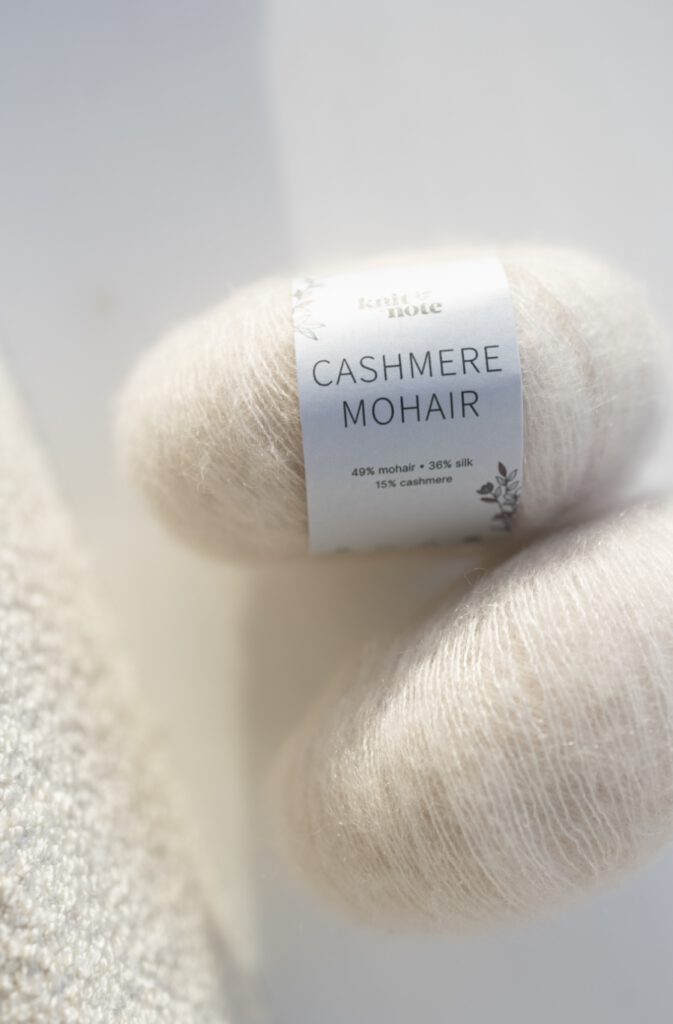
Yarn Swift
With only a yarn winder, you can wind up yarn from another ball of yarn or from a project that you are frogging. If you are trying to wind up yarn from a hank, you will likely need a yarn swift, or something that serves that purpose. A yarn swift is just something that holds the big loop of yarn and lets it spin around freely while you wind it up. I have seen people use substitutions for a swift using things that easily spin around, like an office chair. However, usually a yarn winder and a swift go hand-in-hand for at home yarn winding.
If you want to see a step-by-step of how to set up a hank for winding, check out this post.
How to Use a Yarn Winder
Using a yarn winder is fairly straightforward. All the information that you need to remember is typically on the winder itself. I will just give a quick overview of how to use a hand-cranked yarn winder. First, you want to attach your winder to a sturdy place. I use my dining table. Tighten the wing nut to fix the winder in place. You want to go pretty tight when doing this, because the movement of winding can often cause the winder to jiggle and slip loose if it is not tight enough. Once you have your yarn ready, feed the end through the metal guide towards the winder. Next, slip the yarn into the little notch at the top of the winder to keep the yarn in place. You want to leave enough yarn dangling down so that it can catch on itself. Then you can begin cranking the handle. Most winders have an arrow that tells you which direction you should turn the handle. However, if you do turn it the wrong way, you will find out pretty quickly.
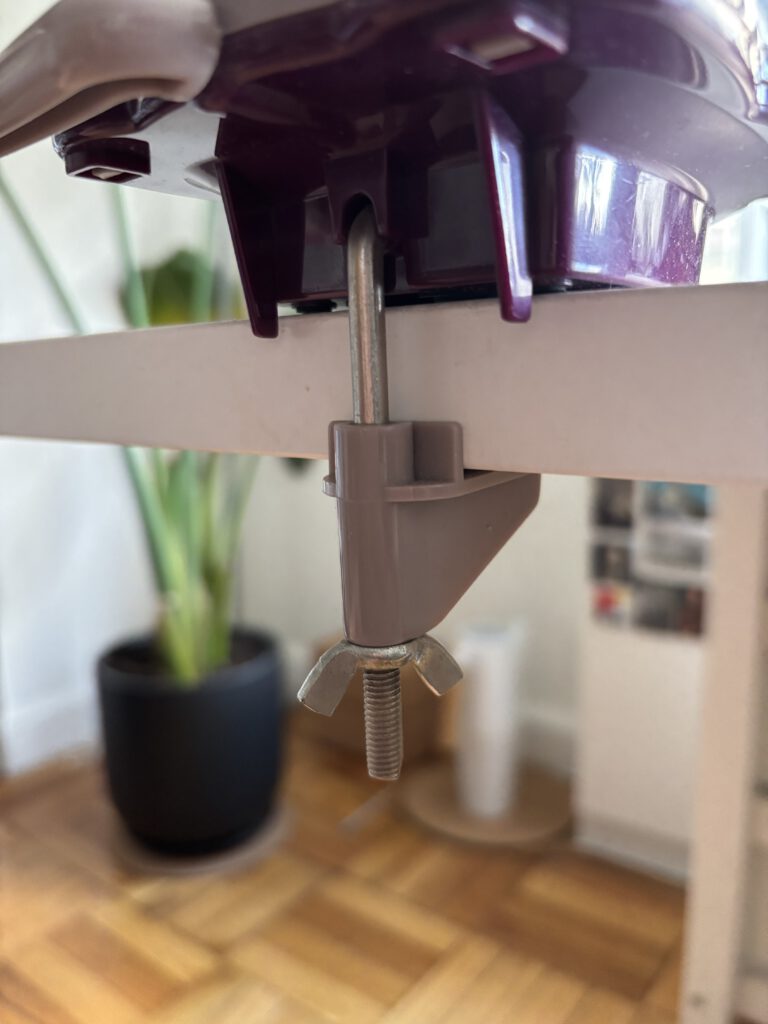
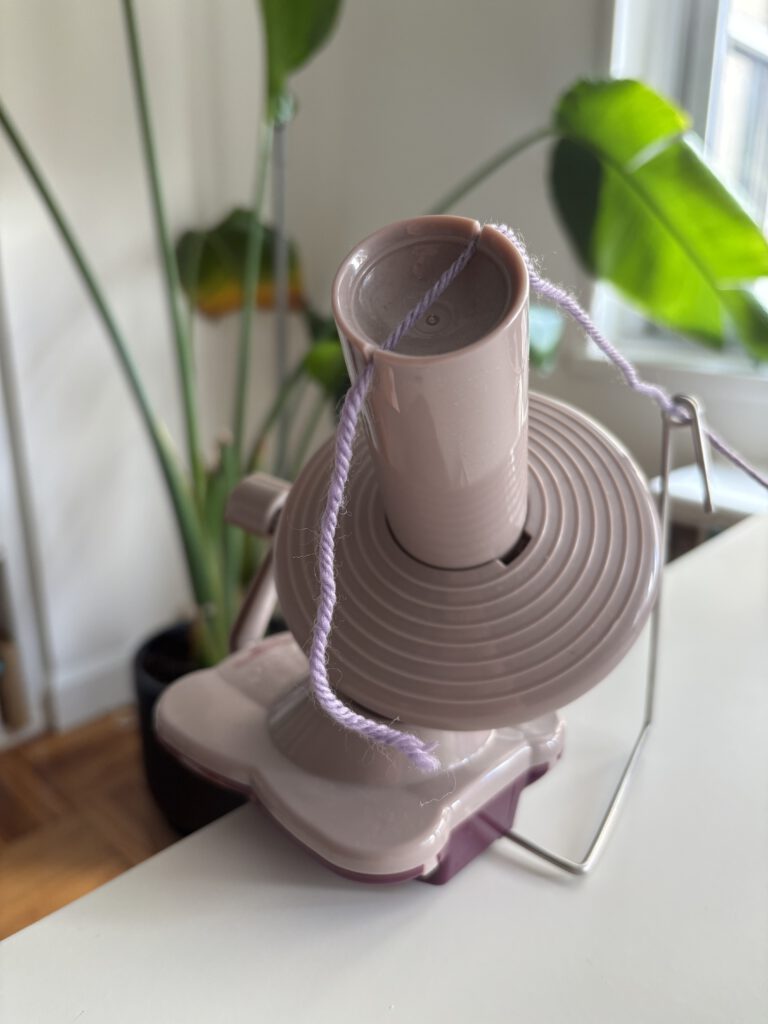
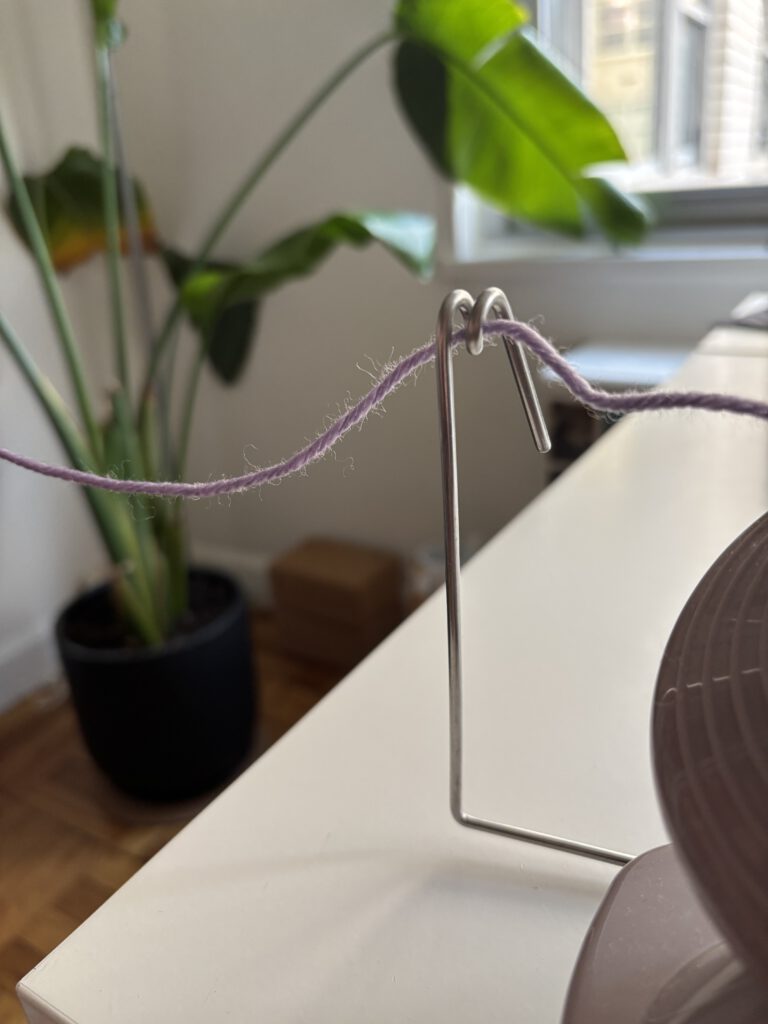
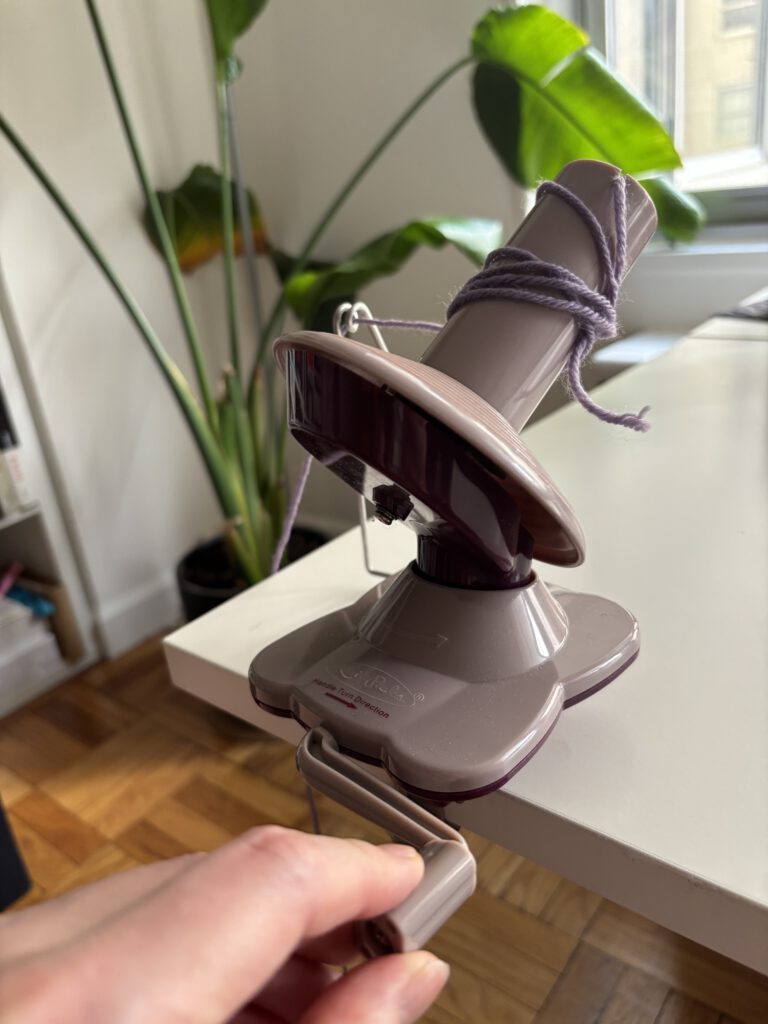
Other Winding Options
There are some other options for winding yarn. One of them is simply winding up the yarn into a ball by hand. Although I would never have the patience for this, some people find the process very meditative. And once you get good at it, you’ll end up with a nice even round ball of yarn that is ready for knitting. There are also tools like the nostepinne that are designed to help you hand-wind yarn more easily. Using a specific technique, you wind the yarn around the nostepinne to get an even distribution of yarn as you wind it up.
Winding the yarn before I start knitting something is one of the most satisfying steps. Plus, I feel like it marks the exciting start of a new project. I hope this has shed some light on the mesmerizing spinning and twisting of the yarn winder. If you do decide that a yarn winder is a tool that you need, you can look forward to making this enjoyable process part of your knitting routine.



